At work we have a human-propelled hydraulic stacker, which recently started to drop under load, with no valve operation. I immediately suspected the lowering valve on the hydraulic pump unit, so set to work getting a replacement fitted.
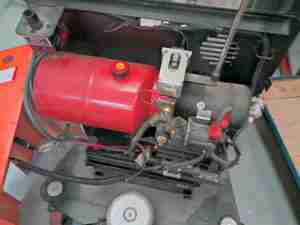
After removing the GRP cover of the mechanics bay, the main hydraulic unit is visible mounted on the top of the frame. Powered by a large 12v SLA battery below, the hydraulic power pack consists of a large 12v motor, gear pump, valve block & hydraulic oil tank. The valve we’re after is hidden at the moment inside the control lever mounting.
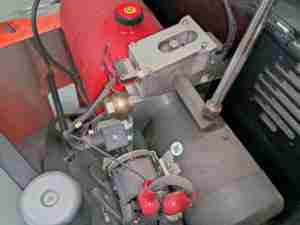
Here’s a better view of the control lever mountings. There’s a pair of microswitches for activating the lowering speed-control valve, and the main contactor which switches the high current to the main motor.
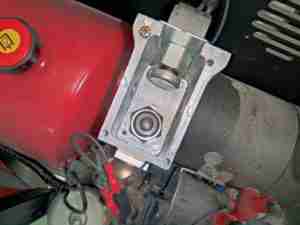
Removing the actuator cam & control lever reveals the valve hiding at the bottom of the mounting cage. I’ve removed the microswitch which operates the lowering speed control valve to gain better access, but the main switch that operates the contactor can stay in place at the top.
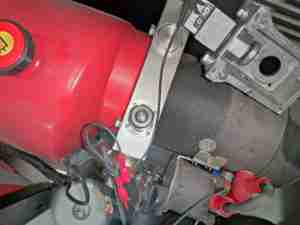
Getting in with a 1″ socket allows the retaining nut holding the mounting cage to be removed, showing the actual valve in the hydraulic block.
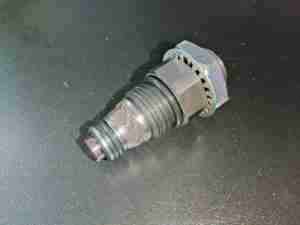
The valve is removed by simply unscrewing it from the main unit. Here’s where cleanliness comes in – the hydraulic system is now open to the environment, and the close tolerances in the valves & main pump will not tolerate dirt & grit getting in! This is a simple poppet valve, the main seal actually being a metal-to-metal tapered surface, and the problem this one has had is the O-Ring seals have failed. The rubber has gone very hard over the 4 years this unit has been in service, and have started to disintegrate. This is still a perfectly serviceable valve once the seals are changed, even if the filter screen has been a little damaged.
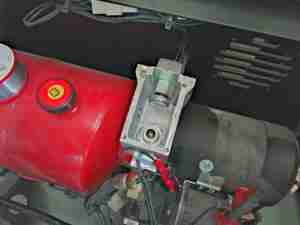
I’ve fitted the new valve to the hydraulic block here, and a test done to ensure the load is held on the hydraulic cylinder. Reassembly is simply the reverse of teardown.
